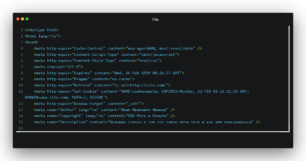Первое, что важно понять, это на что вы ориентируетесь: на язык или регион. На некоторых языках говорят в нескольких странах. Например, английский является официальным языком более чем в 75 странах по всему миру. Бывает также, что в некоторых странах говорят на нескольких языках. Например, в Индии насчитывается 447 языков и 2000 диалектов.
Контент
- Об этом много говорилось — переводите с помощью носителей языка. Более того, желательно построить работу так, чтобы один писал, а второй проверял. Первый находится в вашем офисе, а второй — в целевом регионе.
- Если вы используете изображения людей в дизайне своего сайта, обязательно протестируйте локализацию фотографий. Вместо того, чтобы показывать европейцев, покажите людей той же расы, что и целевая аудитория. Внезапно может оказаться, что ваша целевая аудитория предвзята (не обязательно сознательно) и предпочитает знакомые лица.
- Вы хотите выйти на арабоязычные рынки? Узнайте, что такое «арабская буква» — для этого вам придется перевернуть весь сайт.
- Используете ли вы на своем сайте подключаемые веб-шрифты? Проверьте, как они работают на языке целевой аудитории. Возможно, они вообще не работают. 🙂
- Средняя длина слов в разных языках разная. Например, в тайском языке слова не разделяются пробелами, а предложения разделяются. Ваш дизайнер, вероятно, захочет ознакомиться с этими функциями перед созданием многоязычного макета.
Поисковые системы
Будьте готовы к тому, что разные поисковые системы могут ранжировать один и тот же сайт по-разному из-за различий в восприятии контента, охвате сайтов конкурентов и уровнях развития поисковых систем.
Например, если клиент ищет что-либо на финском языке, в результатах поиска, скорее всего, будут сайты на финском языке. Однако сайтов на ту же тему на финском языке меньше, чем на английском, что может привести к менее строгим или более конкретным правилам ранжирования.
В некоторых странах значительную долю рынка занимают не обычные глобальные гиганты, а локальные решения. Например, Baidu доминирует в Китае, Naver — в Южной Корее, а Coccoc — во Вьетнаме.
Поэтому важно заранее ознакомиться с функциями ранжирования местных поисковых систем. Возможно, вам потребуется существенно переделать сайт, чтобы соответствовать их рекомендациям.
Анализ технической части сайта
1. Какие устройства использует целевая аудитория для доступа к сайту? Может оказаться, что в целевой аудитории в регионе доля мобильных пользователей значительно выше, чем в среднем. Было бы неплохо понять, связано ли это с высоким проникновением мобильного интернета, низкой стоимостью мобильных устройств или с чем-то еще.
Допустим, наша цель — выйти на рынок Японии, и сайт на русском или английском языках. В целом, доля мобильных устройств на сайте составляет 20%. Однако, если мы рассмотрим Японию, доля мобильных устройств составляет 70% (эти цифры абстрактны). Таким образом, мы можем сделать вывод, что для эффективного выхода на японский рынок нам нужно уделять больше внимания мобильной версии сайта.
Мы также должны выяснить размеры экрана и скорость загрузки нашей целевой аудитории. Возможно, нам потребуется отрегулировать ширину контентной части нашей мобильной версии, потому что на экранах меньшего размера пользователям может потребоваться слишком много прокручивать сайт.
2. Не забывайте, что скорость доступа к вашему веб-сайту может сильно различаться в разных странах. В некоторых случаях некоторые провайдеры могут даже быть заблокированы Великим китайским брандмауэром, полностью ограничивающим доступ к вашему сайту.
Если загрузка вашего сайта для вашей целевой аудитории занимает больше времени, чем обычно, возможно, стоит рассмотреть возможность использования CDN или переноса копии на местном языке ближе к посетителям, в идеале в той же стране или на континенте.
3. Что делать, если ваша целевая аудитория в основном использует мобильные устройства с медленным подключением к Интернету? В этом случае важно отдать приоритет мобильной версии вашего сайта, удалив все ненужные элементы и оптимизировав размеры изображений, чтобы уменьшить общий вес страницы. Кэширование также можно использовать для увеличения времени загрузки.
4. У вас также могут возникнуть вопросы по поводу десктопной версии. Например, есть ли среди целевой аудитории пользователи со старыми версиями браузеров? Если доля таких пользователей заметна, проверьте все важные этапы воронки на вашем сайте, такие как регистрация и прием платежей, чтобы убедиться, что весь основной функционал работает должным образом.
При выходе на определенный рынок мне пришлось расставить приоритеты в поддержке старых версий Internet Explorer, и это, вероятно, усугублялось конкретной тематикой.
5. Как должна быть организована языковая структура и что следует делать, когда пользователь меняет язык? Это, пожалуй, самый распространенный вопрос. Существует несколько вариантов, включая сохранение языков в папках, переключение языка с помощью параметра в адресной строке или даже без параметра. Также может случиться, что переведенная копия размещена в другом домене или поддомене.
С точки зрения продвижения более полезны отдельные домены:
- Вы можете купить региональный домен.
- Сайт на одном языке понятнее поисковой системе.
- Две копии с разными переводами могут генерировать больше трафика, чем один сайт с переключением между двумя переводами.
- При необходимости двум сайтам проще иметь разный дизайн.
С точки зрения пользователя, переключение языка в исходном домене является более полезным:
- При смене языка пользователю не нужно заново загружать все изображения и скрипты, как при переходе на другой домен. Все берется из кэша.
- У пользователя может быть разная скорость доступа к разным доменам. По крайней мере, ситуация не ухудшается, если вы переключаете язык внутри домена.
- Может оказаться, что один из ваших сайтов недоступен или забанен в месте нахождения целевой аудитории. Если вы не уверены, будет ли трафик комфортно доходить до целевого сайта, вам не следует перенаправлять его туда.
В заключение, отдельные сайты должны быть созданы на отдельных доменах. Для каждого сайта по умолчанию должен быть установлен определенный язык. Остальные должны быть доступны для переключения в пределах того же домена, но запрещены к индексации.
По возможности предпочтительнее использовать национальный домен для регионального сайта, такой как .kz для Казахстана. Однако не во всех странах разрешается покупка домена, если вы не являетесь гражданином или если название юридического лица / товарный знак не зарегистрированы в этой стране.
Другой причиной для покупки домена в нейтральной зоне (например, .com) может быть то, что ваш бизнес должен иметь лицензию на представительство в целевой стране, чего вы пока не планируете делать. С доменом .com, если необходимая регистрация / лицензирование недоступны, легче пережить негативную реакцию местных регулирующих органов.
Сторонние сервисы
При запуске отдельной версии, предназначенной для определенного региона, вам также следует проверить функциональность всех сторонних сервисов, которые работают с вашим сайтом:
- Какова репутация вашего почтового сервиса среди местных провайдеров?
- Поддерживает ли виджет обратной связи с сайтом новый язык сайта?
- Если данные сайта включены в CRM, есть ли какие-либо проблемы с кодировкой?
- Что говорится в местном законодательстве об использовании файлов cookie (в том числе для вашей аналитики)?
- Загружаются ли ваши аналитические данные и другие сторонние коды вообще в целевом местоположении?
- Используете ли вы SMS-подтверждения? Дойдут ли они до пользователей?
- Принимаете ли вы платежи? За что привыкла платить ваша целевая аудитория?
Как видите, здесь много нюансов: при разработке нужно учитывать как технические требования к сайту, так и культурные особенности региона.


